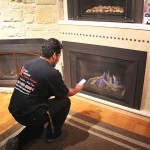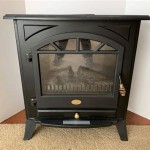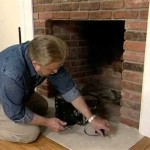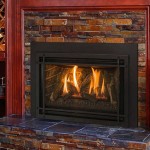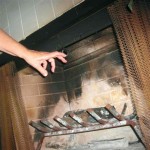Antique Wooden Fireplace Screens: A Timeless Blend of Function and Art
Antique wooden fireplace screens represent more than just functional barriers; they are historical artifacts reflecting evolving aesthetic tastes and societal values. These screens, crafted from various woods and often adorned with intricate carvings, paintings, or needlework, offer a glimpse into the past. They served a crucial purpose in pre-central heating homes and continue to captivate collectors and interior design enthusiasts alike.
The primary function of a fireplace screen has always been practical: to protect the occupants of a room from stray sparks and embers leaping from the fire. In a time when open hearths were the primary source of heat, flying embers posed a significant fire hazard. A sturdy screen, particularly one made of wood, provided a physical barrier, preventing burns and potentially catastrophic house fires. Beyond safety, these screens also offered a degree of control over the fire's heat. By adjusting the screen's position, occupants could temper the radiant heat, creating a more comfortable environment, especially for those seated close to the fire.
The evolution of fireplace screen design reflects changes in architectural styles and prevalent artistic movements. Early examples were often quite simple, focusing on functionality over ornamentation. As woodworking techniques advanced and prosperity increased, fireplace screens became increasingly elaborate. The Victorian era, for example, saw the rise of highly decorated screens featuring intricate carvings, needlepoint panels, and even small, framed paintings. These screens were not merely practical objects; they were statements of wealth and taste.
The Historical Significance of Materials and Craftsmanship
The types of wood used in antique fireplace screens vary considerably depending on the region of origin and the period in which they were made. Mahogany, walnut, and oak were popular choices for their durability and aesthetic appeal. Finer woods, such as cherry or rosewood, were often used for more elaborate and expensive screens. The quality of the wood and the craftsmanship evident in the screen’s construction are key indicators of its value and historical significance.
Construction techniques also offer valuable insights. Early screens were often joined using mortise and tenon joints, demonstrating a high level of skill and precision. Later screens might incorporate more readily available hardware, reflecting the industrialization of manufacturing processes. The presence of hand-carved details, intricate inlays, or delicate needlework elevates a screen from a purely functional object to a work of art. These details underscore the time and effort invested in creating these pieces, making them cherished heirlooms and collector's items.
Furthermore, the finishes applied to these screens can offer clues about their age and provenance. Natural wood finishes, stains, and varnishes were commonly used to protect the wood and enhance its natural beauty. The type of finish, its condition, and any evidence of restoration or alteration are all factors to consider when assessing the authenticity and value of an antique wooden fireplace screen.
Identifying Different Styles and Periods
Antique fireplace screens exhibit a wide range of styles, influenced by prevailing design trends throughout history. Recognizing these stylistic hallmarks is essential for accurate identification and appreciation. For example, screens from the Georgian period (1714-1830) often feature classical motifs, such as acanthus leaves, swags, and urns. The wood is typically mahogany or walnut, and the overall design is characterized by symmetry and elegance.
Victorian-era screens (1837-1901) represent a significant departure from the restrained elegance of the Georgian period. Victorian designs often incorporate elaborate carvings, needlepoint panels, and a profusion of ornamentation. Darker woods, such as walnut and rosewood, were popular, and the overall aesthetic is characterized by opulence and grandeur. Art Nouveau fireplace screens, popular from the late 19th century to the early 20th century, embraced organic forms, flowing lines, and natural motifs. These screens often feature stylized floral patterns, sinuous curves, and a sense of movement.
Identifying the style and period of a fireplace screen requires careful observation of its design elements, materials, and construction techniques. Consulting reference books, online resources, and experts in antique furniture can be helpful in accurately dating and attributing a particular screen.
Restoration and Preservation Considerations
Antique wooden fireplace screens, like all antique objects, require careful handling and preservation to ensure their longevity. Before undertaking any restoration work, it is essential to assess the screen's condition and determine the extent of any damage or deterioration. Minor repairs, such as cleaning and waxing, can often be performed by the owner. However, more extensive restoration work, such as repairing broken joints, replacing missing pieces, or refinishing the wood, should be entrusted to a qualified professional experienced in antique furniture restoration.
When restoring an antique fireplace screen, it is crucial to use appropriate materials and techniques that are compatible with the screen's original construction. Avoid using harsh chemicals or abrasive cleaners, as these can damage the wood and the finish. Preserve as much of the original finish as possible, as this contributes to the screen's historical value and aesthetic appeal.
Proper storage and display are also essential for preserving antique fireplace screens. Keep the screen away from direct sunlight, excessive heat, and humidity, as these can cause the wood to warp, crack, or fade. When not in use, store the screen in a cool, dry place, wrapped in a protective cloth or blanket. Regular dusting and cleaning will help to prevent the accumulation of dirt and grime, keeping the screen in good condition for generations to come.

Yes It S A Fire Screen Needlenthread Com

Antique Wooden Fireplace Tapestry Screen Vintage Beautiful Wood

Antique Fireplace Screen Cedar Hill Farmhouse

Vintage Antique English Oak Barley Twist Fire Screen Wood Divider Furniture For Country Style Decor

Fire Screen Fireplace Antique Psw

Carved Wood Fireplace Screen With Clear Glass Pane Wooden Nickel Antiques

Antique Hand Carved Wooden Fire Screen Vintage Wood 1900s Fireplace With Bertha Maguire Prints By Raphael Tuck And Sons Under Glass

Victorian Antique 1850 English Fireplace Hearth Fire Screen Needlepoint

Antique Hand Painted Fireplace Screen Chairish

Antique Fireplace Screen Cedar Hill Farmhouse
Related Posts

